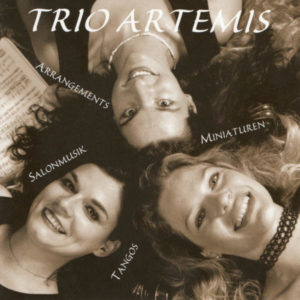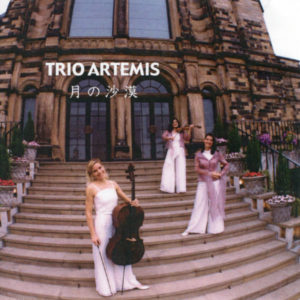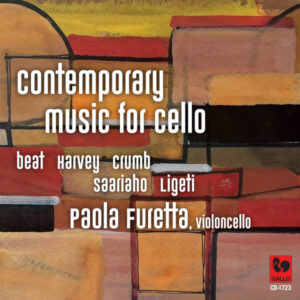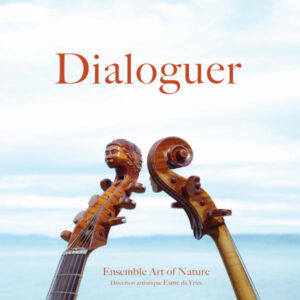Extraits / Excerpts
Schumann: Phantasiestücke, Op. 73 - Grieg: Cello Sonata in A Minor, Op. 36 - Annie Laffra, Michel Perret
Robert SCHUMANN: Phantasiestücke, Op. 73: I. Zart und mit Ausdruck – II. Lebhaft leicht – III. Rasch und mit Feuer – Edward GRIEG: Cello Sonata in A Minor, Op. 36: I. Allegro agitato – II. Andante molto tranquillo – III. Allegro molto e marcato
Annie Laffra, Cello
Michel Perret, Piano (Wikipedia)
Robert Schumann – Phantasiestücke, Op. 73
The Phantasiestücke were written in Schumann’s most prolific year, 1849, a year troubled by the revolution, which the Schumann family managed to avoid by moving from Dresden to the countryside refuge of Kreischa. After composing Geneviève, Manfred, and Faust, Schumann returned to the idiom of chamber music. “I have never been more active or happier in my work,” wrote the composer. This fruitful year also saw the completion of works such as the Pieces for Oboe and Piano, Horn and Piano, Op. 70, and the Concerto for Four Horns and Orchestra, Op. 86, in addition to the Phantasiestücke. These fantasies were written for either clarinet and piano or cello and piano. While the version for clarinet is notable for its brilliance, the version for cello, perhaps the instrument closest in its depth of tone and lyricism to Schumann’s essence, adds another dimension to the work, which has much in common with the Cello Concerto that he started the following year. The three fantasies, although in the same key (A major and minor), are diverse in musical content and exhibit remarkable progress in tempo and intensity. By turns nostalgic, tender, anxious, and impassioned, the three pieces present a highly concentrated synthesis of Schumann’s genius.
Edward Grieg – Sonata in A minor, Op. 36
Much unjust criticism has been directed at Grieg, largely due to his association with the drawing-room concert era, during which he was a highly regarded figure. Despite this superficial connection, Grieg demonstrates his mastery of intuitive and delicate harmonies, and his instrumental language retains a charming simplicity. By blending his unique sensitivity with key ethnic traditions, he avoided sentimentalizing or exploiting them as much as is often claimed. Norway’s dreamy landscapes are reflected in the music of its national composer—the rustic poetry of its people, the spell of its natural wonders. The Cello Sonata in A minor, Op. 36, is in the same key as the Piano Concerto, Op. 16, and is equally significant artistically. Grieg’s masterful handling of the cello unites passion, anxiety, and contemplation, while his rich piano accompaniment represents one of his fullest contributions to the piano repertoire. This music is not merely picturesque; it is evocative. One does not need to be Norwegian to appreciate Grieg’s inspiration, as it resonates deeply between poet and people.
Annie Laffra – Michel Perret
“Never miss an opportunity to make music with other people, in duets, trios, etc. … this will give your technique a flowing impetus.”
These words of advice from Robert Schumann to all musicians could just as easily describe the dedication of Annie Laffra and Michel Perret. Throughout their married life and musical careers, they have brought their duo performances to concert halls in Europe, America, and the Middle East, achieving a remarkable level of ensemble through daily collaboration.
Annie Laffra first studied cello under the direction of her father, Robert Laffra (principal cellist with the Orchestre de la Société des Concerts in Paris), before continuing her studies with her godfather Maurice Maréchal at the Paris Conservatoire, where she won a Premier Prix. She also studied in Siena with Cassado and began a career as a soloist and chamber musician with her husband, Michel Perret, whom she met in Paris. Annie Laffra has received numerous international awards (Prague, Munich, Geneva, and the Young Musicians’ Prize in Zurich).
Michel Perret is a member of the Lausanne Chamber Orchestra, where he plays piano, harpsichord, and timpani. After studying in Lausanne, Geneva, and Vienna (where he received a State Academy Diploma), he embarked on a career as a soloist and chamber musician, performing alongside his wife and other internationally renowned artists. In addition to his orchestral work, he also teaches in the advanced classes at the Lausanne Conservatoire.
- Categories
- Composers
- Interprets
- Booklet












